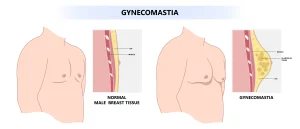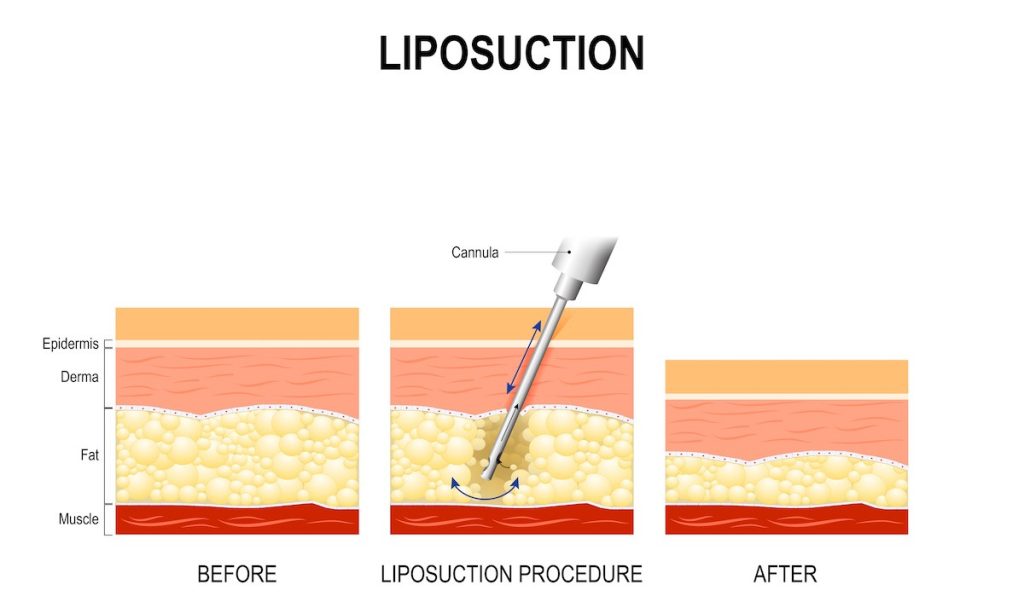Embarking on the journey of male nipple surgery – breast reduction for Gynecomastia Treatment can be daunting.
In fact, when it’s time to take that step, the #1 concern is. The unknowns surrounding male nipple surgery. Understandably, you have NO idea what to expect. But this separates those suffering in silence from those who tackle gynecomastia head-on. Without comprehending the operation and its potential gains, you might never experience this assurance in your physique.
Understanding Gynecomastia and Its Prevalence
Many men may not be aware that Gynecomastia is a prevalent medical condition. It’s characterized by excessive male breast tissue, which can lead to enlarged breasts in men, sometimes called man boobs.
Did you know that approximately two-thirds of adolescents experience gynecomastia, particularly ages 10 to 16?
The Causes Behind Excessive Male Breast Tissue
So, what causes this excess breast tissue?
Most cases are due to hormonal imbalances during puberty, weight gain, or aging. The question is, do you need male nipple surgery?
Risk Factors for Developing Gynecomastia
Certain factors may increase your risk as well:
- Hormonal changes associated with age
- Certain medications
- Marijuana use
These are all potential triggers.
But here’s something crucial: just because you have some degree of gynecomastia doesn’t mean it will persist. In fact, the good news is most cases resolve spontaneously without any need for intervention.
Now, let’s explore why severe gynecomastia isn’t always straightforward and often needs treatment.
The Challenges in Treating Severe Gynecomastia
Let’s dive into the complexities of treating severe gynecomastia, a condition characterized by excessive male breast tissue.
This form of gynecomastia frequently displays unique challenges, primarily in resecting excess skin and submammary tissue.
Surgical Complications and Success Rates
A study in the Aesthetic Surgery Journal conducted over five years involving twelve patients with severe gynecomastia provides some insights.
This study’s complications arose, including unilateral hematoma and bilateral seroma cases.
Furthermore, two cases reported decreased sensibility in the nipple-areola complex post-surgery.
Researchers have proposed a new periareolar approach for surgical procedures on enlarged breasts caused by gynecomastia to overcome these hurdles. This permits broad resection while avoiding unattractive scars from skin reduction surgery.
When to Consider Male Breast Reduction Surgery
Knowing when surgery might be your best option is essential if you’ve been struggling with gynecomastia.
Gynecomastia is characterized by excessive male breast tissue. It can persist despite medication and lifestyle changes.
In such cases, male breast reduction surgery and male nipple reduction should be considered if the condition lasts more than six to twelve months.
Subcutaneous Mastectomy for Grade I and IIa Gynecomastias
The surgical treatment of choice for first-degree (Grade I) and second-degree (IIa) gynecomastias is subcutaneous mastectomy.
This procedure involves removing excess glandular tissue from under the skin through small incisions around the nipple-areola complex. The result? A flatter chest contour that boosts confidence.

Ultrasound-Assisted Liposuction (UAL) For Residual Tissue Removal
- Liposuction isn’t just a weight loss tool but is also important in treating severe gynecomastia. Ultrasound-assisted liposuction, or UAL, comes into play here.
- Apart from fat removal, this technique helps remove residual tissues post-mastectomy while promoting postoperative skin retraction – crucial steps towards achieving desired aesthetic results after male nipple surgery.
In our next section, we’ll dive deeper into specific surgical procedures used for high-grade gyno patients who have undergone massive weight loss.

Surgical Procedures for High-Grade Gynecomastias
High-grade gynecomastia and excessive weight loss present unique challenges in male breast reduction surgery.
The complexity of these cases calls for a different approach to ensure effective treatment and patient satisfaction.
Different Techniques Required
Studies show that bilateral grade III gynecomastia, characterized by severe enlargement of the breasts, necessitates more intricate surgical procedures than those used in lower grades.
This is due to the significant excess skin left after removing enlarged glandular tissue and in male nipple surgery.
Potential Complications Associated with These Procedures
In high-grade gynecomastias or massive weight loss patients, complications such as nipple discharge can occur post-surgery if not handled correctly.
Furthermore, there’s also an increased risk of asymmetry where patients exhibited symmetrical breasts before surgery but had uneven results afterward.
Tackling Skin Reduction Challenges Effectively
To overcome this challenge effectively without leaving unattractive scars on the chest area requires skilled plastic or cosmetic surgeons experienced at making small incisions while performing complex skin reductions. They must have deep knowledge about how treating severe gynecomastia lies within the precise removal of both glandular tissue and excess breast tissue.
Risks Associated with Male Breast Reduction Surgery
Embarking on a journey towards male breast reduction surgery? You might be wondering about the potential risks.
The truth is that every surgical procedure comes with its share of risks and complications.
It is likewise true for gynecomastia surgery.
Potential Risks: A Closer Look
Studies reveal that major and minor complications can occur post-surgery at three to twenty-eight percent rates.
- Nipple discharge,
- Breast cancer,
- Infections around the nipple-areola complex or even,
- Skin necrosis are some reported issues after male breast reduction procedures.
Glandular Tissue Complications
Finding The Right Surgeon Matters.
A skilled cosmetic surgeon minimizes these possible outcomes by making small incisions during the operation, ensuring proper skin reduction techniques are used.
Moving forward, you must be aware of what happens next – recovery.
Let’s look into navigating your post-surgery path.
Navigating Post-Surgery Recovery
After undergoing male surgery, the recovery process begins.
This is an essential phase where your body heals and adapts to its new form.
Caring for Small Incisions
The surgical procedure involves making small incisions in strategic areas to remove glandular tissue effectively.
These incisions need proper care post-surgery to prevent infection and promote healing.
[source] offers valuable insights.
Pain Management After Surgery
You may feel some soreness or pain after the procedure – this is typical as your body adjusts.
[source] provides useful tips.
Mobility During Recovery Period:
It’s important for physical health and aids in faster recovery.
A gentle walk around your living room can do wonders.
Remember, every patient recovers at their own pace; it’s physically and mentally crucial.
In a nutshell, patience and good self-care practices are key elements during this period. With time, you will regain full mobility and enjoy life with renewed confidence.
FAQs in Relation to Male Nipple Surgery – Breast Reduction for Gynecomastia Treatment
Does gynecomastia surgery reduce nipple size?
Yes, gynecomastia surgery can reduce the size of enlarged nipples. This is typically done through a procedure called areola reduction.
How can I shrink my gynecomastia nipples?
A qualified surgeon should perform nipple reduction for those with gynecomastia. Non-surgical methods aren’t effective in reducing nipple size associated with this condition.
What is the best treatment for gynecomastia?
The best treatment for persistent or severe cases of Gynecomastia is often surgical intervention such as subcutaneous mastectomy or ultrasound-assisted liposuction (UAL).
What are the new techniques for gynecomastia surgery?
Newer approaches to treating severe Gynecology include the periareolar incision technique, which allows extensive resection while avoiding unsightly scars.
Conclusion
Gaining knowledge of gynecomastia and its frequency is key in seeking an answer.
The challenges in treating severe cases are real but not insurmountable with new surgical approaches.
When medication fails to deliver results, male breast reduction surgery becomes an effective treatment option.
Different techniques cater to varying degrees of gynecomastia severity, ensuring tailored solutions for every patient’s needs.
Risks exist, like any other surgical procedure. However, being informed helps you make educated decisions about your health journey.
Navigating post-surgery recovery might seem daunting initially; however, knowing what to expect can ease the process significantly.
If you’re ready to take control of your body and confidence back through male nipple surgery – breast reduction for Gynecomastia Treatment – consider reaching out to us at Gynecomastia LA.
We specialize in providing expert care and personalized solutions designed just for you. Let us help guide your path towards reclaiming a more comfortable physique.
If you’re considering taking control over your body image through gynecomastia surgery or want more information on Male Nipple Surgery: Gynecomastia Breast Reduction, visit our clinic. For your complimentary appointment, call 424-279-5801 seven days a week from 8 am to 8 pm PST or complete this contact form.

Dr.Babak Moeinolmolki
LA Cosmetic Surgeon Dr. Moein is board-certified by the American Board of General Surgery.
